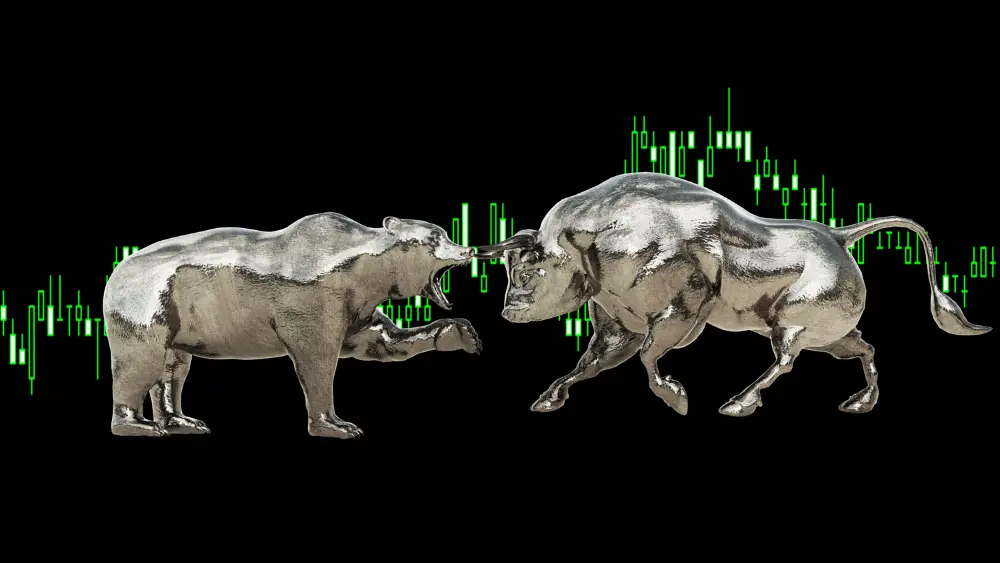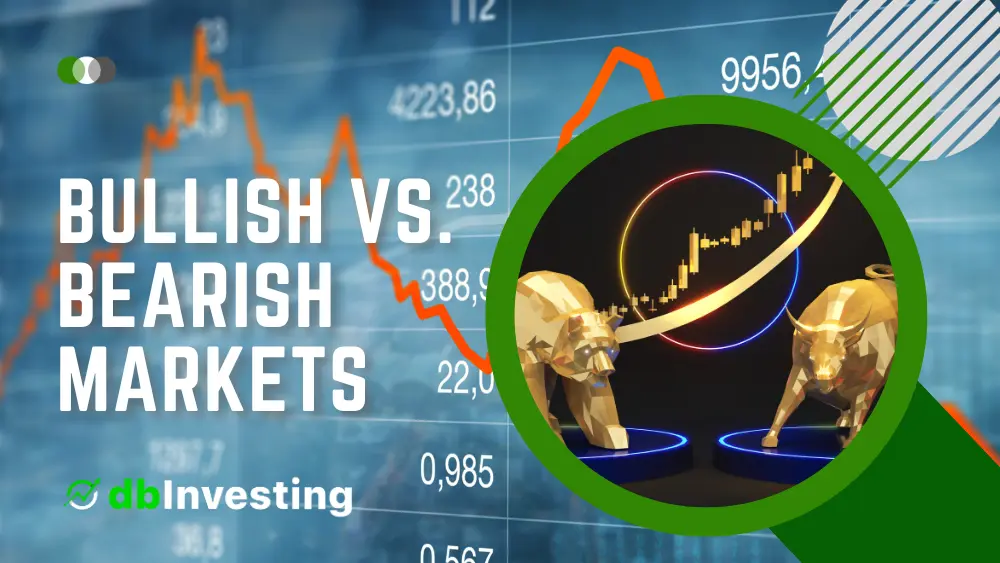Financial markets are constantly in a state of flux, influenced by a myriad of factors, including economic conditions, investor sentiment, and geopolitical events. Two terms frequently used to describe the prevailing market sentiment are “bullish” and “bearish.”
These terms are crucial for investors and traders alike, as they help gauge market direction and make informed decisions. In this comprehensive guide, we will delve into the concepts of bullish and bearish markets, exploring what they mean, how they manifest, and the key differences between them.
Bullish Market
Definition
A bullish market, often simply referred to as a “bull market,” is characterized by optimism, rising asset prices, and a generally positive outlook among investors. In a bull market, the demand for securities exceeds their supply, resulting in upward price trends. This phenomenon can occur in various financial markets, including stocks, bonds, real estate, and cryptocurrencies.
Characteristics of a Bullish Market
- Rising Prices: One of the hallmark features of a bull market is the sustained upward movement of asset prices. This is often driven by strong economic fundamentals, increased corporate profits, or favorable government policies.
- Investor Confidence: In a bullish market, investors are generally optimistic about the future prospects of the market and are more inclined to buy assets, expecting their value to appreciate.
- High Trading Volume: Bull markets typically witness increased trading activity as more participants enter the market to capitalize on the rising prices.
- Economic Growth: A strong economy is often a catalyst for a bull market. Factors such as low unemployment rates, robust GDP growth, and favorable inflation levels can contribute to this sentiment.
- Positive News Flow: Positive news about the economy, corporate earnings, or other market-moving events can further fuel bullish sentiment.
Bearish Market
Definition
Conversely, a bearish market, or “bear market,” is marked by pessimism, falling asset prices, and a general negative outlook among investors. In a bear market, the supply of securities outstrips demand, leading to declining prices. Bear markets can also occur in various asset classes, and they are typically associated with economic downturns.
Characteristics of a Bearish Market
- Falling Prices: The most distinctive feature of a bear market is the persistent decline in asset prices. This is often triggered by economic recessions, unfavorable economic data, or negative geopolitical events.
- Investor Caution: In bear markets, investors tend to become more risk-averse, leading to a decrease in buying activity. Many investors may adopt a “wait-and-see” approach or even start selling assets to limit their losses.
- Lower Trading Volume: Bear markets often experience reduced trading volume as market participants become hesitant to enter or exit positions.
- Economic Challenges: Economic indicators such as rising unemployment, contracting GDP, and inflationary pressures can contribute to a bearish market sentiment.
- Negative News Flow: Negative news, such as corporate earnings disappointments or geopolitical tensions, can exacerbate bearish sentiment.

Bullish vs. Bearish Markets
Duration
- Bullish Market: Bull markets can last for an extended period, sometimes several years, driven by strong economic growth and investor optimism.
- Bearish Market: Bear markets are typically shorter in duration but can still be quite severe. They are often associated with economic contractions and can last from a few months to a couple of years.
Investor Sentiment
- Bullish Market: Investor sentiment in a bull market is positive, with a belief that the market will continue to rise. Investors are more willing to take risks and invest in various assets.
- Bearish Market: In a bear market, investor sentiment is negative, and risk aversion prevails. Investors are cautious and may seek safe-haven assets like bonds or gold.
Economic Factors
- Bullish Market: Bull markets are often accompanied by robust economic growth, low unemployment, and corporate profitability.
- Bearish Market: Bear markets are typically triggered by economic challenges, such as recessions, rising unemployment, and reduced consumer spending.
Asset Prices
- Bullish Market: Asset prices, across various classes, generally rise in a bull market. This includes stocks, bonds, real estate, and cryptocurrencies.
- Bearish Market: In a bear market, asset prices tend to decline, leading to losses for investors holding these assets.
Investment Strategies
- Bullish Market: Investors in a bull market may employ strategies such as buying and holding, trend following, or growth investing.
- Bearish Market: In a bear market, strategies like short-selling, defensive investing, or holding cash to wait for opportunities become more popular.
Conclusion
Understanding the concepts of bullish and bearish markets is essential for any investor or trader navigating the complex world of finance. Bull markets are characterized by optimism, rising prices, and economic prosperity, while bear markets are marked by pessimism, falling prices, and economic challenges.
By recognizing the signs and characteristics of these market conditions, individuals can make more informed investment decisions and better manage their portfolios. Remember that markets are cyclical, and being prepared for both bullish and bearish phases is a fundamental aspect of successful investing.



